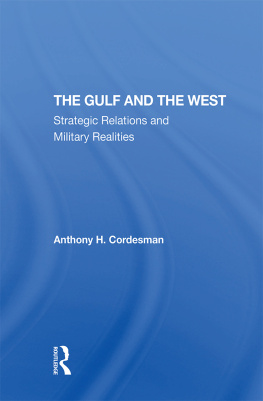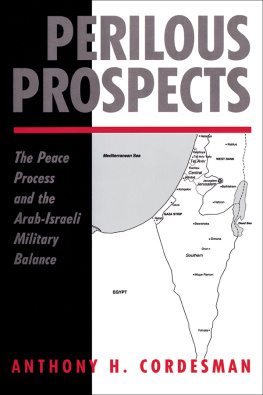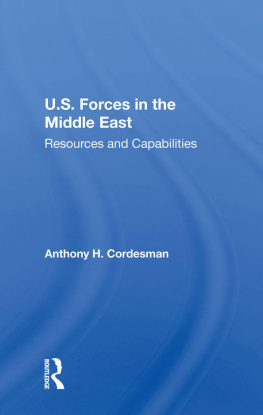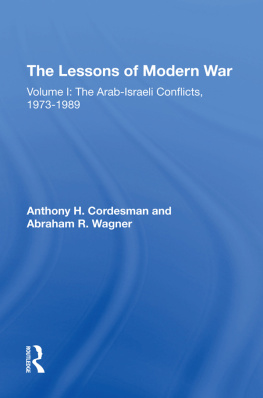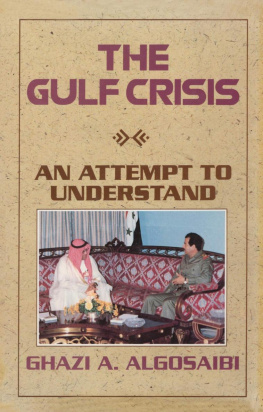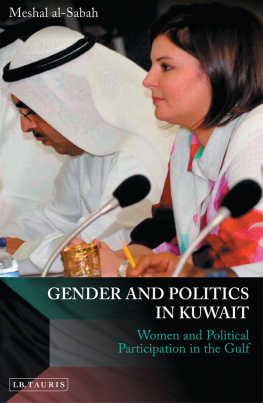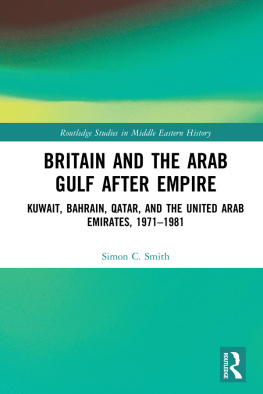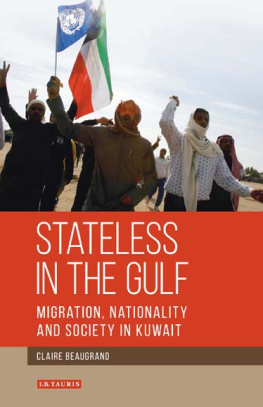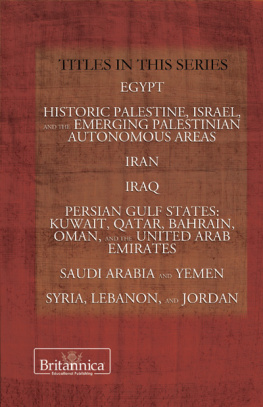CSIS Middle East Dynamic Net Assessment
Kuwait
Recovery and Security
After the Gulf War
Anthony H. Cordesman
First published 1997 by Westview Press
Published 2018 by Routledge
711 Third Avenue, New York, NY 10017, USA
2 Park Square, Milton Park, Abingdon, Oxon OX14 4RN
Routledge is an imprint of the Taylor & Francis Group, an informa business
Copyright 1997 by Anthony H. Cordesman
All rights reserved. No part of this book may be reprinted or reproduced or utilised in any form or by any electronic, mechanical, or other means, now known or hereafter invented, including photocopying and recording, or in any information storage or retrieval system, without permission in writing from the publishers.
Notice:
Product or corporate names may be trademarks or registered trademarks, and are used only for identification and explanation without intent to infringe.
Library of Congress Cataloging-in-Publication Data
Cordesman, Anthony H.
Kuwait: recovery and security after the Gulf War / Anthony H.
Cordesman.
p. cm.
Includes bibliographical references.
ISBN 0-8133-3243-5 (he). ISBN 0-8133-3244-3 (pbk.)
1. KuwaitPolitics and government. 2. KuwaitDefenses.
I. Title.
DS247.K88C67 1997
953.67053dc21
96-44401
CIP
This book was typeset by Letra Libre, 1705 Fourteenth Street, Suite 391, Boulder, Colorado 80302.
ISBN 13: 978-0-8133-3244-4 (pbk)
Contents
This volume is part of an ongoing dynamic net assessment of the Gulf. The project was conceived by David Abshire and Richard Fairbanks of the Center for Strategic and International Studies, and focuses on the foreign policy, military forces, politics, economics, energy sector, and internal security of each Gulf state, and US strategy and power projection capabilities in the Gulf. Separate volumes are available on Kuwait, Iran, Iraq, Saudi Arabia, and US forces. Bahrain, Oman, Qatar, and the UAE are combined into a single volume.
Each of these volumes is interlinked to provide comparable data on the current situation and trends in each country, and to portray the overall trends in key areas like the economy and the military balance. The volume on Iran provides a detailed graphic overview of the military trends in the region, but each volume shows how the key economic and military developments in each country relate to the developments in other Gulf countries.
At the same time, this series deliberately emphasizes nation-by-nation analysis. Iran and Iraq clearly deserve separate treatment. The Southern Gulf states are largely independent actors and are driven by separate strategic, political, economic, and military interests. In spite of the creation of the Arab Gulf Cooperation Council (GCC), there is little practical progress in strategic, economic, or military cooperation, and there are serious rivalries and differences of strategic interest between Bahrain, Kuwait, Oman, Qatar, Saudi Arabia, and the UAE. The Southern Gulf cannot be understood in terms of the rhetoric of the Arab Gulf Cooperation Council, or by assuming that developments in Bahrain, Kuwait, Oman, Qatar, Saudi Arabia, and the UAE are similar and these states have an identity of interest.
These Gulf studies are also part of a broader dynamic net assessment of the Middle East, and a separate study is available of the trends in the Arab-Israeli military balance and the peace process. See Anthony H. Cordesman, Perilous Prospects, Boulder, Westview, 1996.
Anthony H. Cordesman
This volume is part of a six-volume series reporting on a dynamic net assessment of the Gulf. The project was conceived by David Abshire and Richard Fairbanks of the Center for Strategic and International Studies, and is part of a broader dynamic net assessment of the entire Middle East.
The author would like to thank Kimberly Goddes and Kiyalan Batmanglidj for their research and editing help in writing this series, and Thomas Seidenstein and David Hayward for helping to edit each volume.
Many US and international analysts and agencies played a role in commenting on drafts of the manuscript. So did experts in each Southern Gulf country. The author cannot acknowledge these contributions by name or agency but he is deeply grateful. The author would also like to thank his colleagues at the CSIS who reviewed various manuscripts and commented on the analysis. These colleagues include Richard Fairbanks and Arnaud de Borchgrave, and his Co-Director of the Middle East Program, Judith Kipper.
A.H.C.
Kuwait plays a critical role in any projection of the worlds future oil supplies. As of 1994, Kuwait had estimated proven oil reserves of 94.8 to 96.5 billion barrels, or about 8.6% to 9.7% of all world reserves. Most estimates indicated that Kuwait has probable reserves of at least 4 billion barrels more.
Kuwait is also one of the two major oil exporting powers that can rapidly increase production in an emergency, an important fact that will grow steadily over time. The US Department of Energy estimates that Kuwait will expand its production from a little over 2.3 million barrels per day in 1995 to 3.1 (3.03.3) million barrels per day in 2000, 3.8 (3.64.5) million barrels per day in 2005, and 4.6 (4.05.1) million barrels per day in 2010.
At the same time, Kuwaits geography, small size, and limited population make it one of the most vulnerable Gulf states. Its location on Iraqs border has been the source of continuing Iraqi threats, military confrontation, and actual invasion. Its location within a few minutes flying time of Iran has made it equally vulnerable to Iranian threats and pressure. Iranian aircraft attacked Kuwait several times during the Iran-Iraq War. Iranian naval forces attacked tankers and other ships moving to Kuwait. Iranian anti-ship missiles attacked targets in Kuwaits harbors, and Iranian intelligence sponsored bombings and terrorist attacks.
This combination of oil wealth and geographical vulnerability make Kuwait a critical strategic pivot in a net assessment of the Gulf. The ability of Kuwait, its neighbors, and the West to deal with Iraqi intimidation or invasion largely determines the security of the upper Gulf and the containment of Iraqs political and military ambitions.
Kuwait is located in the far northwestern corner of the upper Gulf between Iraq and Saudi Arabia, and within a short distance of Iran. It is one of the worlds major oil powers, but it has a total area of only 17,800 square kilometersroughly the size of New Jersey. At its largest point, Kuwait is about 200 kilometers from north to south and 170 kilometers from east to west. It shares a 242 kilometer border with Iraq and a 222 kilometer border with Saudi Arabia. It has a 499 kilometer coastline on the Gulf, and its territory includes nine islands. Bubiyan and Warbah two large islands in the northare uninhabited but are of strategic importance, because they border the Umm Qasr channel, which is Iraqs only waterway with direct access to the Gulf.

MAP ONE Kuwait

 MAP ONE Kuwait
MAP ONE Kuwait

